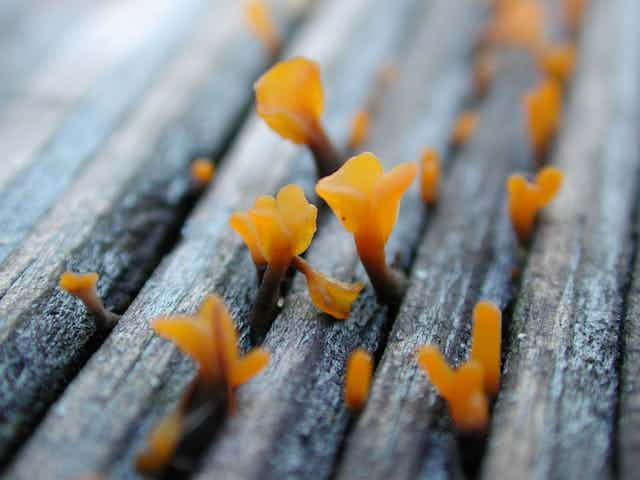Researchers have found that dishwashers are particularly conducive to the growth and spread of disease-causing fungi. These fungi have been implicated in causing lung diseases and sometimes fatal infections, especially among those with weak immunity.
Fungi come in many different forms. According to a study published this month and another published in 2011, the culprits in dishwashers are black yeasts (Exophiala), red yeasts (Rhodotorula), a white yeast (Candida parapsilosis), and some nasty moulds. These fungi make spores to survive in extreme environments, as well as to reproduce and spread. These spores are single-celled seeds that are very light and spread easily, through air or by clinging to moving things.
Species of Exophiala, have been shown to cause lung disease in patients with weak immunity, according to recovered clinical samples in the US. The mould Magnusiomyces capitatus can cause fatal infections in especially leukemia patients. Both red yeast, Rhodotorula, and the white yeast, Candida parapsilosis, are emerging disease-causing fungi, especially through infected catheters.
What makes fungi hard to deal with it is that they can survive almost anywhere and under extreme conditions. All they need is a little bit of moisture, even if it is in the form of humidity in the atmosphere.

It should not be surprising then that fungi prefer dishwashers. Not only are they damp and warm, the continuous use of detergents makes the environment favourably alkaline too. According to researchers, the rubber seals of dishwasher doors are the perfect places for these fungi. They are of course also found in natural environments like tropical rain forests, on tropical fruits, hot springs in Thailand, Japanese house baths and Turkish public baths.
In particular, species of the black yeast Exophiala and the mould Magnusiomyces capitatus also grow in high concentrations of salt, which tend to be maintained in dishwashers to avoid accumulation of calcium.
In the 2011 study, European investigators sampled 189 dishwashers from around the world. The presence of some mould or yeast could be detected in about 62% of these samples. The researchers also found that the calcium-content of water seemed to play a role in the growth and persistence of the black yeasts in the dishwashers, which agreed with earlier evidence. Using scanning electron microscopy, they showed that black yeasts excreted polymeric substances that formed a tough biofilm protecting the fungi from excess heat and mechanical damage.
In the most recent study, Turkish investigators sampled 153 dishwashers, in addition to other appliances, and found similar results. Almost one in five dishwashers yielded fungi, mostly black yeasts. These researchers also studied the genetic signatures of these black yeasts, and found one type that had specialised in invading urban households.
To clarify, there is yet no direct relationship established between dishwashers and human fungal infections, but the health hazard exists. Today, many patients have weakened immunity; even healthy individuals may have some undetected impairment in immunity because of the environment we live in. There is evidence of association between mould-infested “sick” buildings and human disease, especially respiratory illness. The recent outbreak of meningitis due to medication contaminated by a black mould (Exserohilum rostratum) was traced to poor maintenance of sterility in a US pharmacy. A continued co-existence with the fungal jungle in one’s own household could become a serious public health concern.

